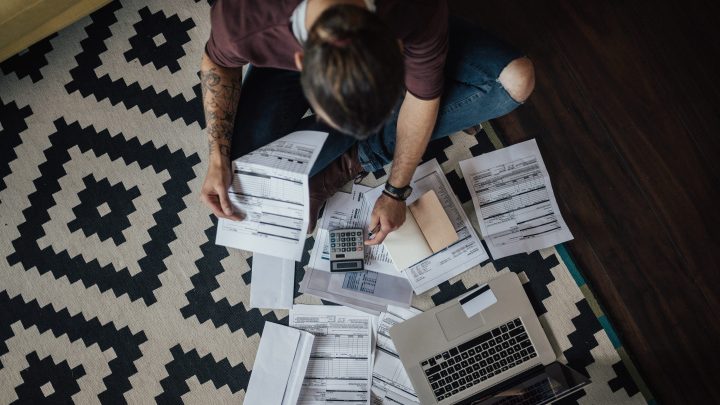
Household debt is up sharply, but don’t worry … yet.

Household debt reached $17.5 trillion in the fourth quarter of last year, according to the Federal Reserve Bank of New York. It seems that auto loans and credit card balances are the main culprits. And what’s more, the amount we are paying in interest on this debt — as a percentage of our income — has been moving up sharply.
In just the final three months of last year, we added to our household debt $271 billion. That is 19% higher than the average for that time of year over the last two decades, said Cassie Happe, an analyst at WalletHub.
“Not only are we adding more to those balances, but what we’re paying in interest to pay off those balances has been growing as well,” Happe said.
That’s because the Federal Reserve has been raising interest rates, which hit credit cards hard.
“We see right now 49% of credit card holders carry debt from month to month. Three years ago, 39% of card holders had debt,” said Ted Rossman, a senior industry analyst at Bankrate.
The average rate on that credit card debt reached 22.8% last year, a record high. On the other hand, incomes have gone up quite a bit, Rossman said.
We’re more able to carry the debt we’re taking on, but it doesn’t always feel that way.
“I think if you say this to the average American, they would say, ‘What wage gains? My rent is up, my grocery bill is up,'” Rossman said.
But when you look at the interest we’re paying as a percentage of our incomes, things are not nearly as bad as in just before the 2008 financial crisis, the dot com bubble, or in the mid-80s. Today’s interest rates, as high as they are, aren’t that high, said Loretta Roney, CEO of InCharge Debt Solutions, a nonprofit credit counseling agency.
“When I bought my very first house in 2006, my interest rate was 6% and I thought that was fantastic. Compare that to the ’80s when they were up in the teens,” she said.
The pandemic pause on student loan repayment has helped, Roney said, as did stimulus checks, “and we’ve had a prolonged period of high employment.”
Today though, we are, hopefully, just getting to some kind of balance between income and debt. Roney said we are many years away from some kind of crisis tipping point where our debt gets beyond our ability to pay it off.
There’s a lot happening in the world. Through it all, Marketplace is here for you.
You rely on Marketplace to break down the world’s events and tell you how it affects you in a fact-based, approachable way. We rely on your financial support to keep making that possible.
Your donation today powers the independent journalism that you rely on. For just $5/month, you can help sustain Marketplace so we can keep reporting on the things that matter to you.

















